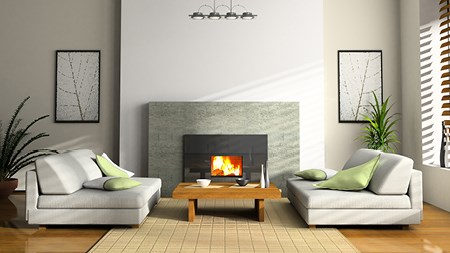Energy-efficient fireplaces are synonymous with impressive cost savings.
The fundis advise that you do the math and calculate the savings over four months when using fire-power instead of electricity. When multiplied over 10 years, this amount could make a considerable dent in your bond or, a bulge in your pocket.
When searching for a new home, it helps to be mindful of both winter and summer lifestyles. A practical and economical approach to spending more time indoors during winter, and as warmly as possible, can be a real treat in harsh climates and sun deprived leafy suburbs.
Agents say that although tenants and buyers seldom list fireplaces as a pre-requisite, those living in colder climates should consider the long-term value of existing or potential installations. They say, for instance, that newcomers to Cape Town are easily lured by the priceless summer outdoor lifestyle. However, they soon discover the marvels of hibernating around any variety of fireplaces and good Cape wines during the wet winter months.
Efficiency and economy
This is when efficient and economical wood burning fire systems, which often burn day and night, prove their true worth. Especially in extreme climates, such as in the Eastern Cape, where the mercury in the Molteno district regularly drops to around -18 degree C. Farmers around the Drakensberg escarpment and the Lesotho highlands say that stockpiles of dry exotic wood, as opposed to indigenous species, have to last for at least six months of the year.
Experts say that optimal indoor heating efficiency is achieved by maximising hot air flowing inward, and minimising the loss of heat, both outward and upward into a chimney. Depending on prevailing weather conditions and architectural era and style of houses, fireplaces and chimneys often feature more prominently in south-facing locations.
The growing popularity of high-efficiency, closed wood-burning stoves with convection chambers, which date as far back as the 18th Century, is due to efficient airflow, which in bygone eras was improved by pulling air from a basement, while upward venting was facilitated.
Open vs closed
Today, the modern technology behind closed fireplaces targets limited carbon emissions, provides, energy savings, and maximises clean interior air and optimum indoor health. Research shows that open fireplaces, while creating a good visual ambience, have the greatest negative impact on indoor health, and air quality. The mixture of gases and fine particles from wood smoke, as well as gas omitted from vent free or unvented gas fireplaces, have proven harmful to occupants of buildings.
Shopping around for suitable interior heating facilities, will no doubt highlight the overall performance and health benefits of closed fire systems.
When families fuel fires with a carbon neutral renewable resource such as wood, as opposed to fossil fuels, they can achieve optimum heating while reducing their carbon footprint.



